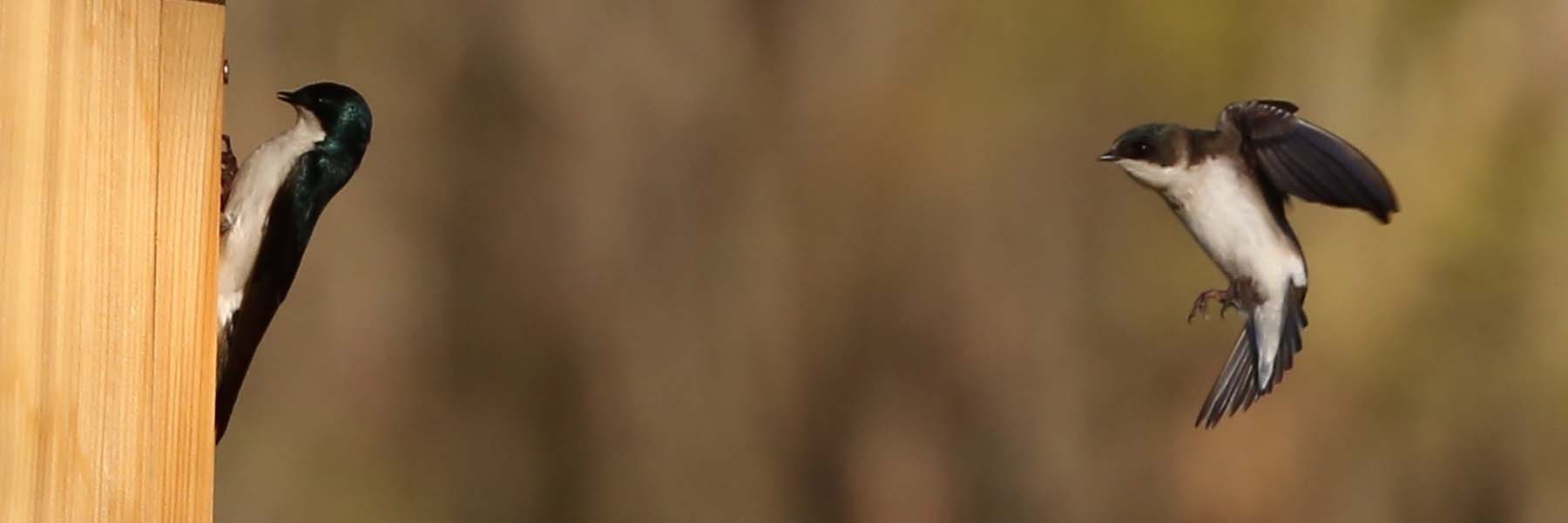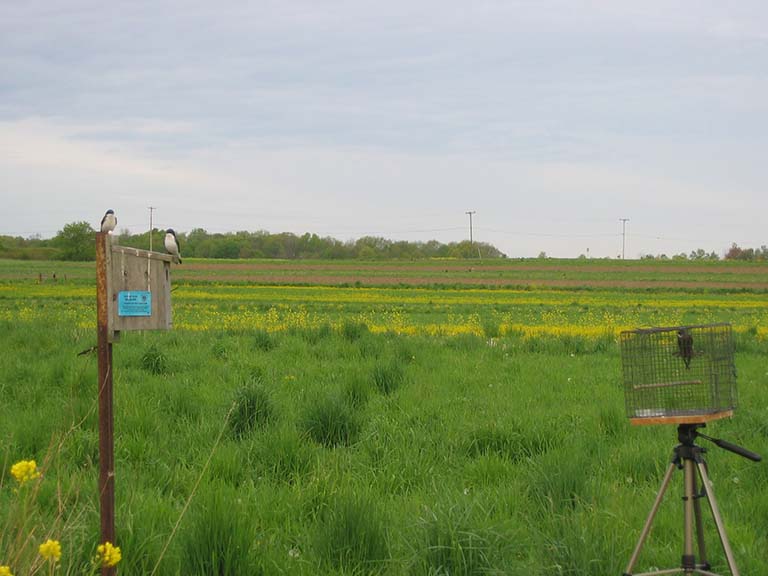The bi-directional link between hormones and behavior has been a rich area of research for decades, perhaps especially so for the vertebrate sex steroid hormone testosterone. Theory on the evolution of hormones and behavior was advanced by the “challenge hypothesis,” which presented a framework for understanding interspecific, seasonal, and social variation in T levels in males, and how they are shaped by the competing demands of parental care and male-male competition (Wingfield et al. 1990).
Females compete too, and they naturally produce testosterone. Our group has been working to understand how testosterone and aggression interact in females, using the tree swallow as a model. In this species, female aggression is adaptive during territorial establishment (Rosvall 2008) and mediated by testosterone (Rosvall 2013). However, seasonal changes in aggression do not mirror changes in ovarian testosterone production (George & Rosvall 2018; Bentz et al. 2019 GCE), suggesting that other mechanisms must promote aggression when testosterone is low. Collectively, our findings suggest that androgens may promote aggression in females, but that selection may favor more finely-tuned processing of testosterone at the tissue level, perhaps as an adaptive mechanism to minimize the costs of testosterone to females (George & Rosvall 2022).
We are currently investigating how mechanisms of aggression vary as females transition from warrior to mother, a period of time when female brains and female bodies undergo massive changes in thier functioning (Bentz et al. 2019, BMC Genomics).



